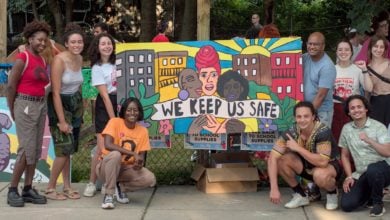The collapse of First Republic Bank is the second largest bank failure in U.S. history. The first was Washington Mutual during the 2008-2009 economic crisis. Despite that alarming precedent, economic authorities in the United States are moving forward with plans to deliberately cause more bank failures, put millions of people out of work and generally tank the economy. Even more, they are trying to claim they are doing this to help the economy. On top of that, the working class doubly pays the cost since the ultimate responsibility of the increasing cascade of bailouts also falls on the shoulders of workers. Not to mention the fact that Congress and the White House are on the verge of a crisis over the debt ceiling that is likely to result in deep cuts to social programs at the exact time they are most needed.
In other words, the collapse of First Republic Bank is a sign of the rot at the center of capitalist economics and politics; the response to its collapse speaks directly to the class war being waged right out in the open by the capitalist class. Most importantly, it serves as a crucial opportunity to make clear that these problems in the banking sector are features, not bugs, of capitalism, and only by uprooting the entire system of “boom-bust-bailout” that fails so miserably at providing a decent living for tens of millions in the United States can workers truly improve their lives.
Why did they go under?
First Republic is a victim of the “bubblenomics” most notable for its ultra-low interest rates that has ruled the financial realm since the “dot com collapse” at the turn of the century. First Republic built its model on the status quo of this era (Why First Republic Collapsed-Wall Street Journal). They cultivated clients with higher incomes and in turn used their deposits to speculate on mortgages. They prided themselves on having great customer service, something designed to offset the fact that they paid very low interest rates on their checking accounts. As long as interest rates stayed super low, there was not much of a problem. The wealthy depositors valued the customer service, and weren’t looking for that much money in interest from their checking accounts. As interest rates rose, however, the bank was in a double bind.
On the one hand, depositors were moving their money looking for higher rates of return than what a First Republic account offered. That is, they increasingly wanted their money out. On the other hand the bank was deeply caught up in fixed-rate mortgages. These lose value as interest rates rise. This meant First Republic had access to less money in real life than it did on paper. This became a major problem as depositors started asking for large amounts of their money, all at once. At the end of the day, the bank cracked under pressure and after borrowing huge sums from the government and some private banks to try to avoid the worst, finally collapsed, leaving the Federal Deposit Insurance Corporation to pick up the pieces.
Big banks get bigger
The government dealt with the bank collapse by facilitating the consolidation of the banking sector. The FDIC, which manages the resolution of failed banks, worked out a deal with JPMorgan, the nation’s largest bank, to take over all of First Republic’s assets. As the Wall Street Journal notes, the purchase “boosts the New York bank’s massive loan book and dominant deposit franchise. It gives the megabank a new crop of rich customers at a time when it is trying to expand its wealth-management operation.” Even better for JPMorgan the bank will “share losses … on First Republic’s loans.” So in other words, JPMorgan gets all the upside, but taxpayers are on the hook for some “share” in the downside (WSJ).
This will do nothing whatsoever to address the ongoing crisis in the banking system, mainly because the Federal Reserve is deliberately pursuing policies that will create more bank runs and failures. Without a doubt, this “solution” has also made one part of the problem worse, creating an even larger “too big to fail” sector of the banking industry that thrives by gambling recklessly and passing off the losses to working-class people by demanding bailouts.
Encouraging banking consolidation as a “solution” to these various bank runs, the government is enshrining the principle that big business can do whatever it wants and never face the consequences. And the potential consequences are real. The 25 largest bank holding companies in the U.S. control $247 trillion in derivatives — Wall Street bets — many of them that no one even knows the terms of. These banks have just $18 trillion in assets (Wall Street on Parade). Clearly, the possibility is very real for more bets to go bad than even the biggest banks can cover.
Enter the Fed
The financial press is reporting that the Federal Reserve will conduct at least one more interest rate hike this year. They are of course aware that the current banking crisis was caused by their rate hikes so far — that, however, is the plan. The Federal Reserve is currently carrying out a plan to address inflation that makes sure workers, not capitalists, bear the brunt of the pain. The plan is based on a set of false premises about what causes inflation. Mainly, that workers simply had too much money due to the various COVID relief measures and rising wages. Simply put, the evidence does not bear this out. Nonetheless, the Federal Reserve and its defenders have used this as an excuse to raise interest rates to bring on a recession.
This, of course, is bad for certain individual capitalists, but for capitalists overall, it’s far less painful than the alternative, and for the JPMorgans of the world it also opens up lucrative opportunities to gobble up rivals at bargain basement prices.
In reality, however, inflation is not caused by anything like higher wages or stimulus checks. Instead it’s a combination of the war in Ukraine, massive corporate price gouging and the COVID-19 pandemic (Wall Street on Parade). Addressing inflation then would imply ending the war and the massive sanctions associated with it, enacting high taxes on the wealthy to decrease incentive to price gouge and continuing to improve public health services. Included in this could be further measures like price caps. All of this puts the burden squarely on the ruling class. Requiring a climb down from their imperial adventures and agreeing to a redistribution of wealth through taxes and increased social spending.
Make the rich pay! Nationalize the banks!
Inflation policy is simply just another arena of class warfare. The working class has to go on the offensive, but how? One critical way is to demand actual solutions that put the burden on capitalists be enacted immediately. We can go a step further however and demand that the monopoly core of the banking sector be nationalized. This is easier than one might think, because just a handful of banks, about 25, control 69% of all U.S. bank assets (Wall Street on Parade). Among the United States’ largest 100 companies there are seven banks; combined they control roughly 44% of all banking assets (Wall Street on Parade). That would mean taking over just a handful of banks — 0.59% of FDIC insured banks — would make the bulk of the banking sector a public utility (Quarterly Report on Bank Trading and Derivatives Activities-Dec. 2022).
Practically, this would massively democratize capital allocation, the heart of capitalist investment and could make the difference between investing tens of billions of dollars in affordable housing as opposed to the trillions big banks invest in opaque, poorly-regulated “derivatives” that are essentially just insurance for Wall Street gamblers. Rather than investing for maximum profit, investment would be based on maximum social value.
Broad social categories could transform not just investment, but innovation. Projects would have to foreground their relationship to broad societal priorities. An app that helps keep the water clean is going to draw more investment than one that better addicts people to sports betting, for instance. Nationalization is still, essentially, in a broader marketized framework. Some things will work out, some won’t, and since the banking system would be largely controlled by society writ large, we’d all bear the costs of any failure.
The framework of said failures however would be massively shifted. It would be our basic livelihoods, the strength of our built environment, the health of the planet and the quality of our essential services that would be “too big to fail,” not corporate profits. Not to mention, managers and executives would no longer have an incentive to gamble in order to artificially pump up earnings statements, and would instead be rewarded for real benefit and long-term durability.
However, even this modified version of our current reality opens up space to ask deeper questions about how our economy is organized.
Socialism is the future — build it now!
Why, for instance, are markets considered the best way to allocate goods and services when they are obviously doing such a poor job of it now? Why not start from a different premise? Consider people’s needs first and foremost. Instead of worrying primarily about capital allocation, we worry about resource allocation. If we know we need a certain amount of housing, why not simply plan with the steelmakers, bricklayers, appliance makers, HVAC installers and so on to make sure we have enough of all the various elements to assure we can build the requisite amount of housing? If we know we need more rural hospitals, how many doctors, nurses, MRI machines and so on do we need?
How do we align our educational, manufacturing and construction processes to make sure the buildings, the machinery and the people exist to make possible our goals? In this different, better world, our jobs and our education are linked to a plan to continually grow and improve society. In other words we would have an economy built on directly linking the existing human and material resources to the needs of society.
This is the type of society we write about in our recent text “Socialist Reconstruction.” This book was written specifically because it can be hard to envision a world radically different from our own. It can however be done, and the current fears of an economic meltdown are the perfect opportunity to start taking steps to change the world for the better.






